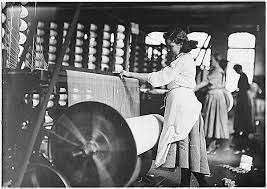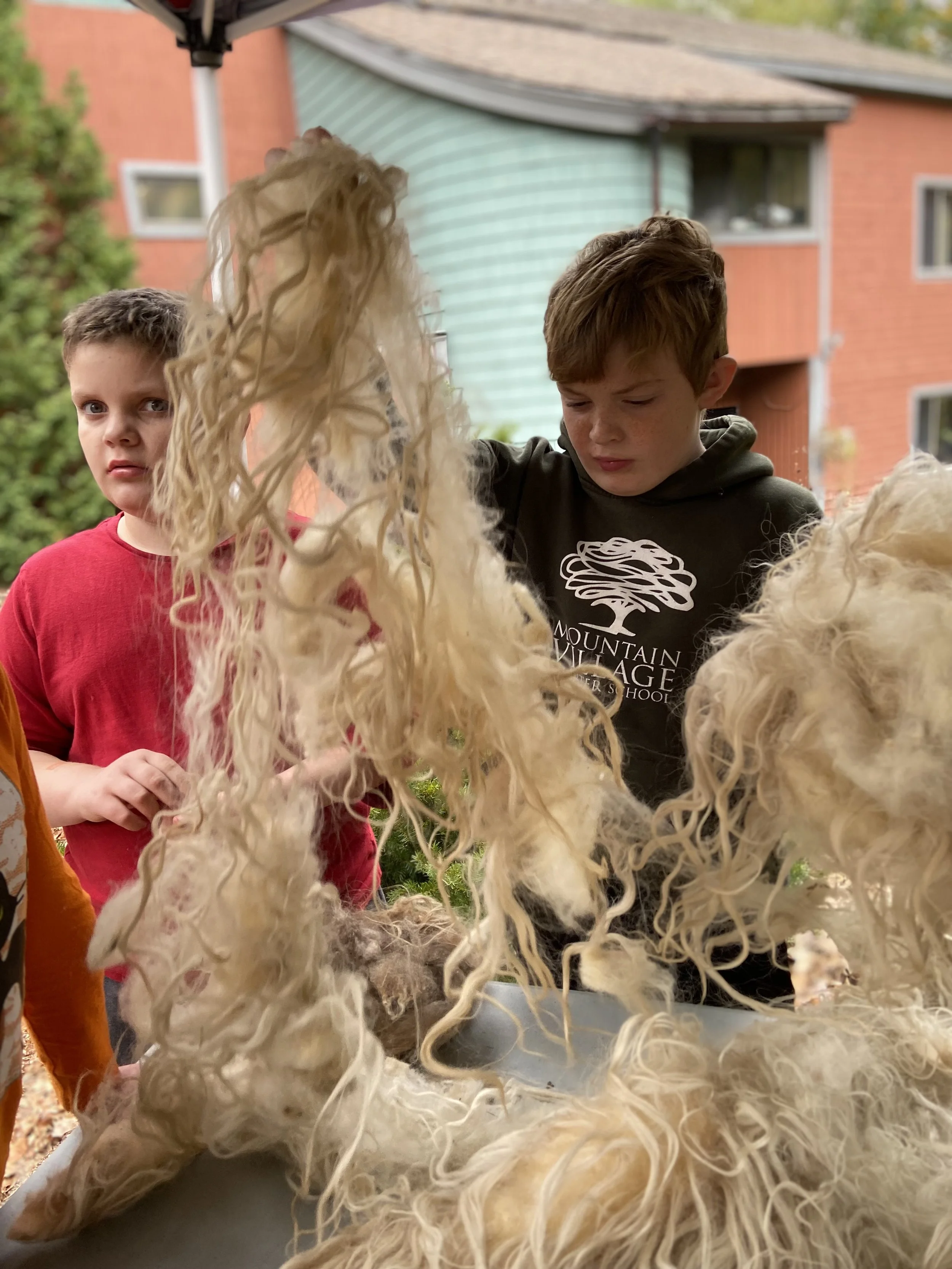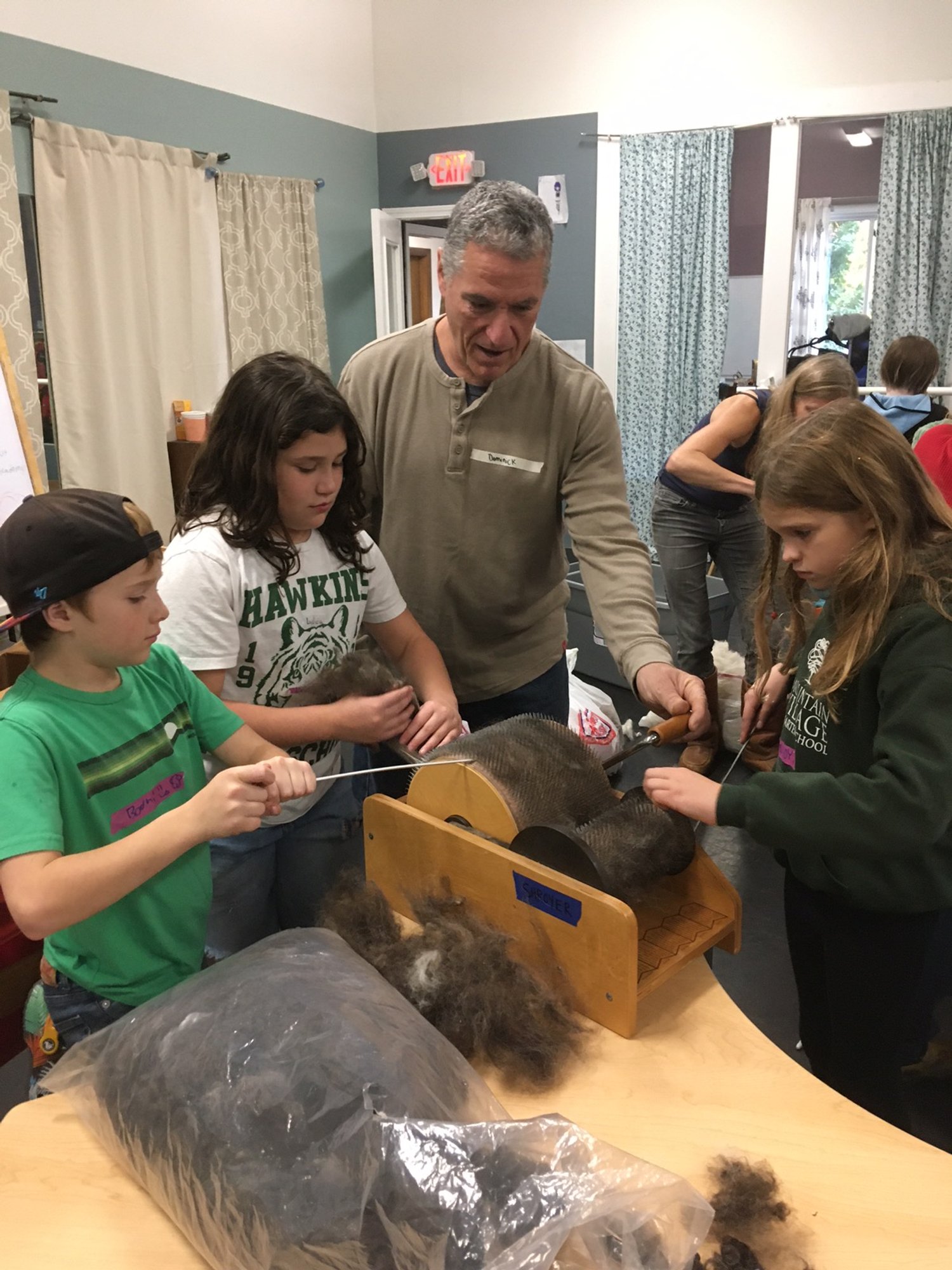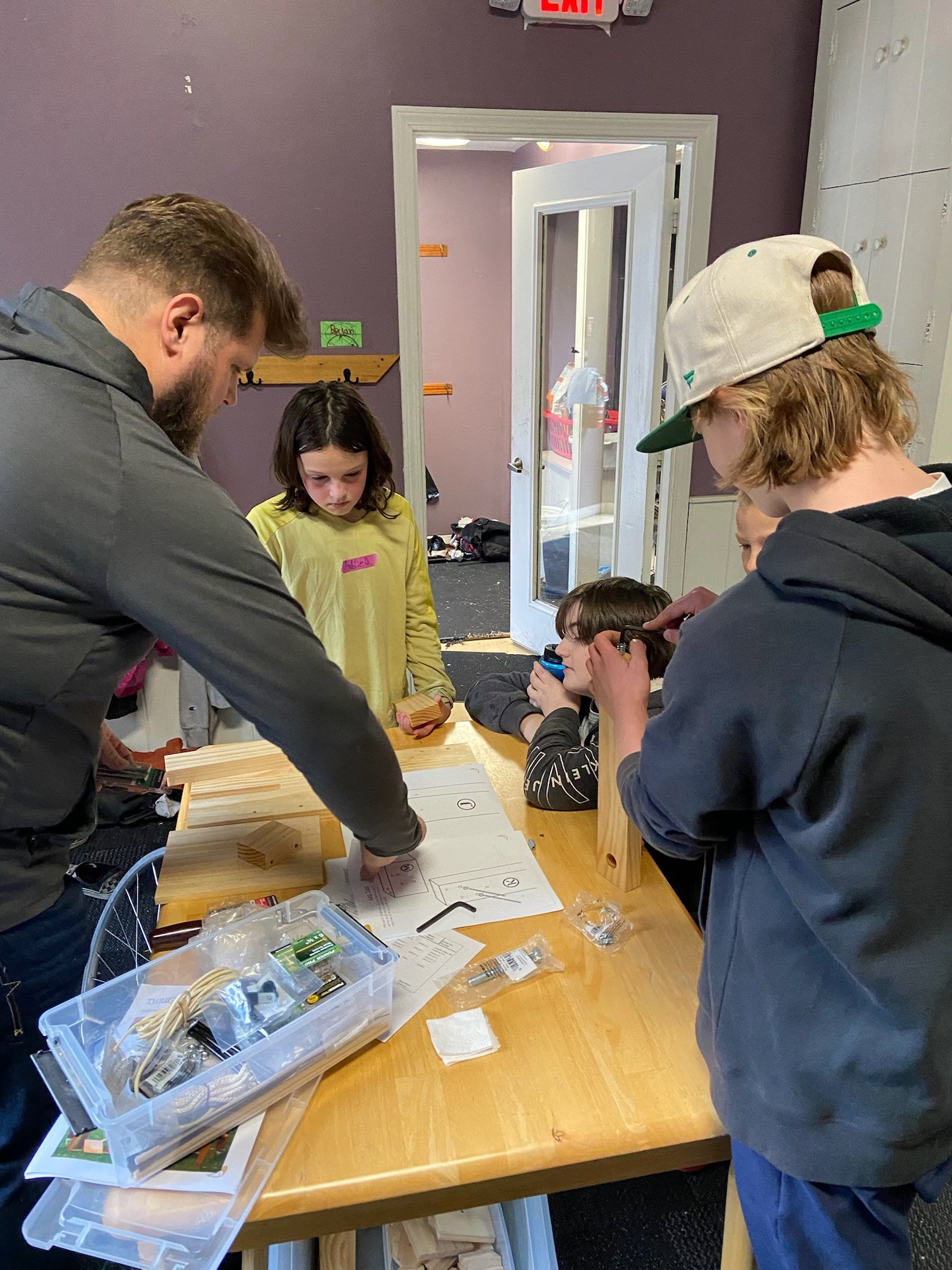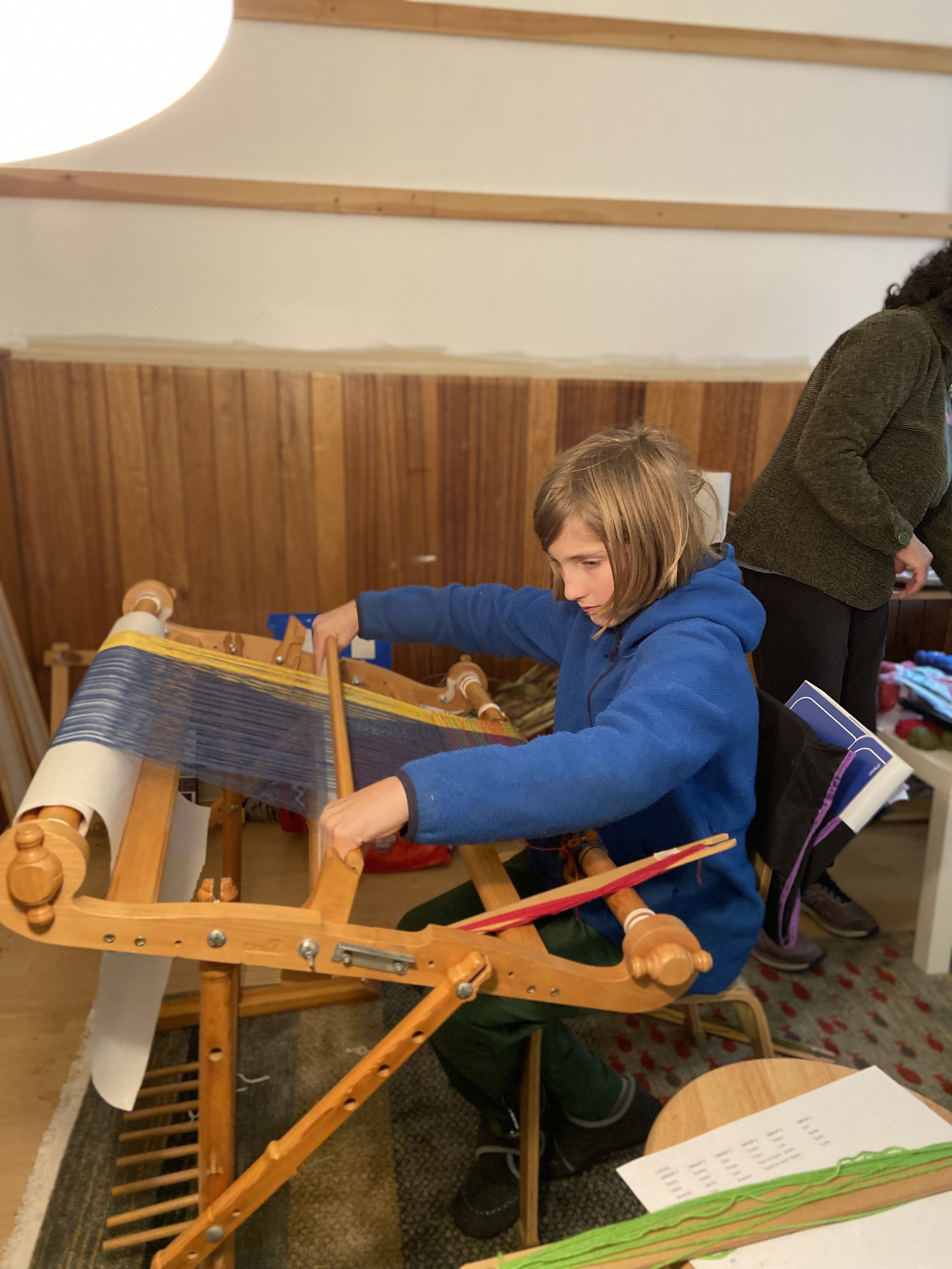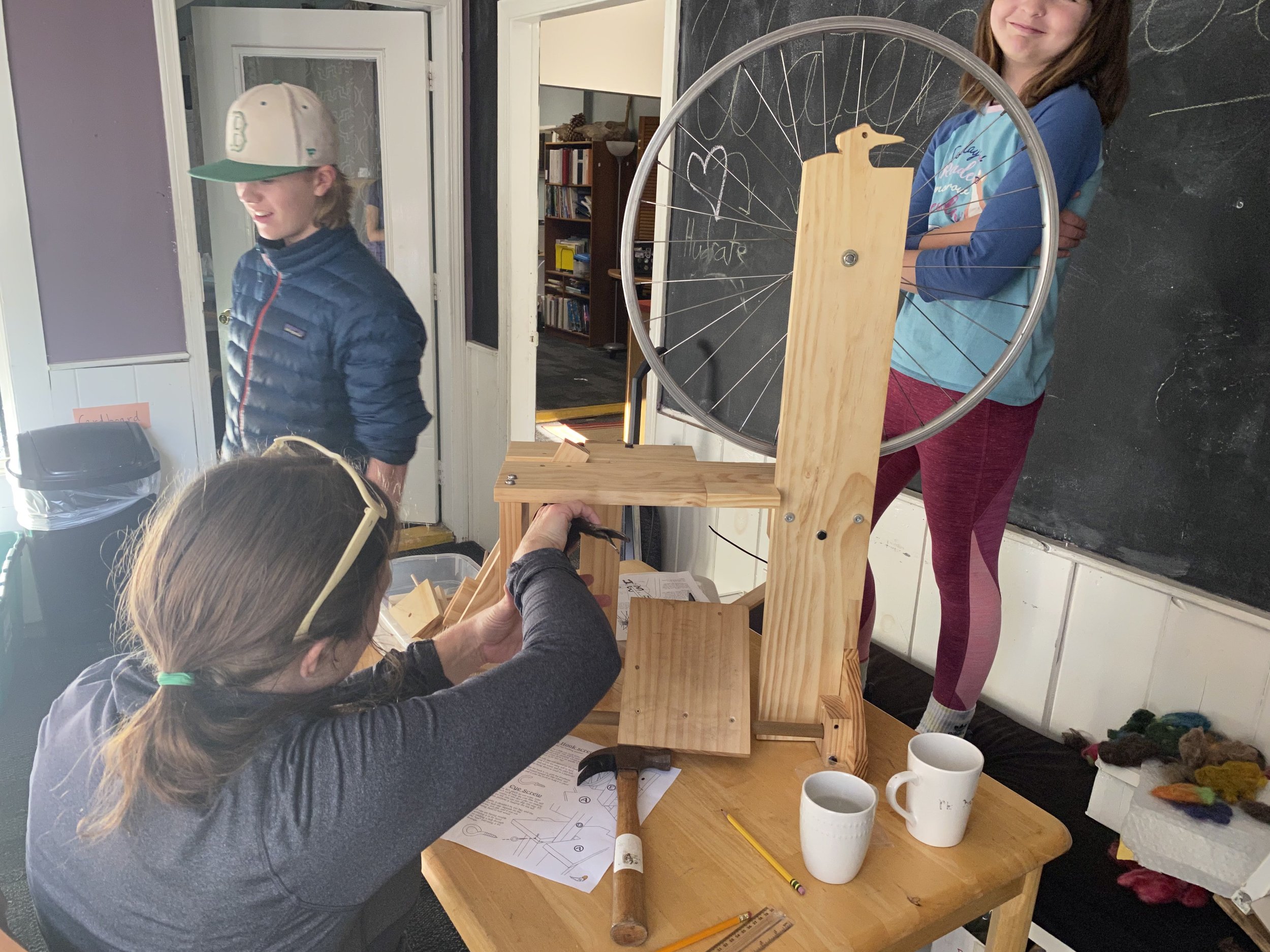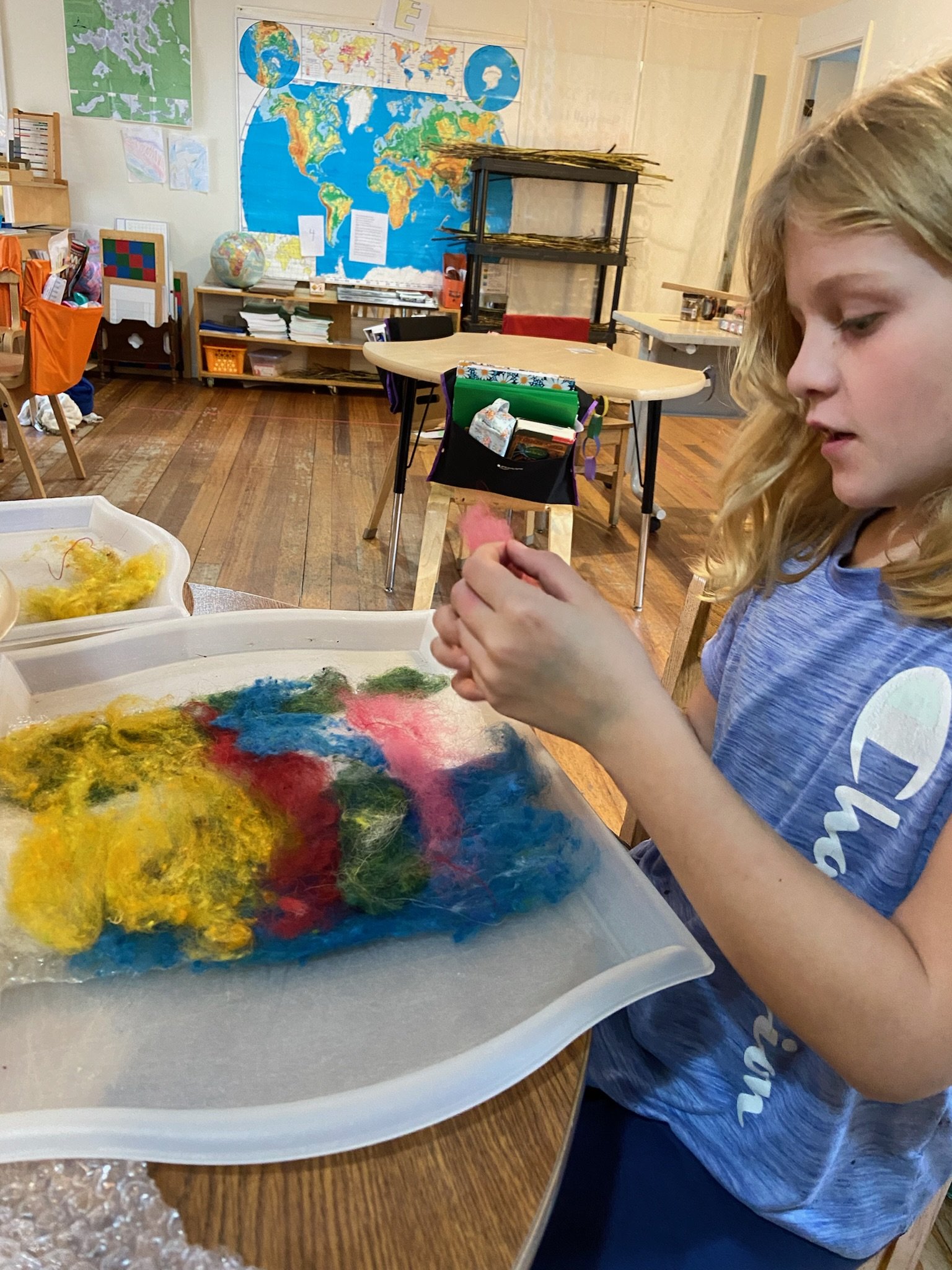upper elementary: Industrial revolution
Mill girls, Lowell Textile Mill
This year, Upper El will explore the 18th and 19th centuries in the United States, integrating science, math, social studies and ELA. How do we approach this period from a nature-based perspective? This is a particularly interesting question because it was during this period that much of the Western world experienced a drastic distancing from the natural world: industrialization contributed to the loss of traditional domestic skills and knowledge; it also transformed peoples’ daily lives, as certain household tasks were relocated to factories and cities grew at unprecedented rates, with a shift from small-scale skilled production to large-scale manufacturing.
Illustration of spinning in the British- American colonies. Spinning wheels were common household tools and children learned to use them at a young age, enabling them to contribute to the household economy.
Upper El students will begin the year by having hands-on experience of a cottage industry, wool production, from start to finish. Cleaning and carding wool; gathering plant dyes; spinning, weaving, knitting, felting, and crocheting. We hope students will get a sense of the complexity of knowledge involved in the start to finish processing of a single household product, wool. This exercise is also designed to increase the students’ awareness of how modern products have erased the raw materials (that come from a real place, a real animal) and processes (generational knowledge of skills, chemistry, biology) of finished products. With this concept firmly in mind, they will develop a deeper understanding of both the benefits (efficiency, cost effective, urban development) and losses (knowledge, working conditions, environmental considerations) that resulted from the industrial revolution. Middle School Brook Trout students will lend a hand to assist our community volunteers with the younger students.
wool processing
skirting and washing fleece
MVCS parent and sheep farmer Erin Martin taught Loons and Black Bears how to skirt (remove excessively dirty wool) and wash raw Icelandic fleece. Sheep wool needs to be washed in hot water (above 140F) to dissolve the lanolin, a waxy substance that sheep produce to protect their wool. Lanolin needs to be removed prior to carding.
Raw sheep fleece
carding washed fleece
Students carded the washed fleece with hand carders, combs, and drum carders to align the wool fibers and make roving to be spun into yarn.
spinning wool
Weavers Elaine Bello and Anita Furbush introduced students to spinning and weaving. Elaine instructed students to draft roving for drop spinning and spinning on a spinning wheel, while Anita guided students in warping and weaving on a rigid heddle loom.
Building a spinning wheel
Parent and woodworker James Hall worked with students to build a spinning wheel.
The “loon” spinning wheel.
wool finishing
weaving
Students were introduced to weaving using their own cardboard looms to create colorful tapestries. Students also practiced weaving on a rigid heddle loom, generously loaned to the Loons classroom by MVCS Board Member Liz Wilson.
rag rugs
Students tear fabric scraps into long strips to use in making rag rugs- woven and braided.
felting
Felting binds wool fibers together, creating a tight, insulating, and naturally water resistant fabric. Students learned to felt wool using a “wet felting” technique, to make cookie cutter ornaments and felt “pictures.”


